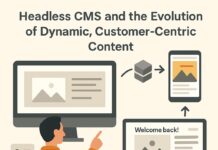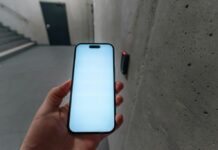Finding usable illustrations reminds me of shopping for clothes online. Everything looks great in photos, but half the stuff doesn’t fit when it arrives. You scroll through endless galleries, save promising options, then discover they’re wrong for your project. Icons8 built Ouch promising editable illustrations would solve this headache. I’ve tested it across multiple client projects. Here’s what happened.
Breaking Down the Library
Ouch organizes content into twenty-one visual styles. Seemed excessive at first. Working with picky clients changed my mind fast. Minimal geometric stuff works great for enterprise dashboards. Character-heavy designs fit consumer apps perfectly. Technical diagrams handle corporate docs without looking childish. Each style stays consistent. Prevents that “assembled from random clip art” disaster.
The key difference from normal stock sites is how illustrations work. Most places dump finished files on you. Take it or leave it. Ouch builds everything from separate pieces you can edit. Characters exist apart from backgrounds. Objects sit on different layers. Effects work independently. Finding something 60% right and tweaking the rest beats endless browsing.
File formats cover the basics. SVG scales perfectly across devices. Essential when designs span phones to big monitors. PNG works when SVG creates browser headaches. Animations include GIF for social posts, MOV for presentations, Lottie JSON for web projects. After Effects files handle motion design. Solid coverage without unnecessary complications.
Customization Process
The modular approach changes how you hunt for illustrations. Instead of seeking perfect matches, you find decent foundations and fix problem areas. Change character clothes. Replace backgrounds entirely. Adjust colors throughout. Rearrange elements however you want. Each piece works independently. Modifying one part won’t mess up everything else.
Mega Creator handles editing through your browser. No expensive software needed. Drag elements around. Pick new colors with standard tools. Scale things up or down. It’s not Illustrator level, but handles routine changes without monthly fees or training courses.
Developer Usage
Frontend teams use these as functional interface parts, not decoration. Onboarding needs clear visual steps. Empty states require helpful graphics that don’t confuse users. Error pages work better with appropriate images. Loading animations keep users engaged while stuff processes.
Responsive design works because SVG scales naturally. Component structure adapts to different screen sizes through CSS. Standard development approach. Reliable results.
Research labs and universities often need precise scientific visuals for their publications and educational materials. The science clipart collection offers laboratory equipment, molecular diagrams, and research process graphics that maintain accuracy for academic presentations and educational content.
Marketing Applications
Content marketing needs visual consistency across blog posts, emails, social media, landing pages. Can’t hire illustrators for every piece. Brand consistency beats perfect individual images when building recognition over time.
Email campaigns face technical challenges. Large files trigger spam filters. Complex animations slow mobile loading. Ouch’s SVG animations stay lightweight while adding visual appeal. No delivery problems. Color adjustments maintain brand consistency without rebuilding everything.
Developer Integration
Getting assets happens multiple ways depending on team workflow. Desktop app enables drag-and-drop into Sketch, Figma, Photoshop, code editors. API access supports automated workflows for bigger operations.
Git handles SVG files smoothly. They’re XML underneath. Teams collaborate on edits through normal version control. Build processes automate optimization and format conversion. No manual steps.
Educational Implementation
Schools and universities deploy these across learning platforms and course development. Visual learning requires consistent styling throughout materials, presentations, assessments, supplementary content. Education collections address teaching needs like concept visualization and process explanation.
Universities extend usage to research presentations, academic papers, conference materials, grant applications. Institutional branding integrates through color customization. Maintains professional academic standards.
Small Business Economics
Early-stage companies face budget constraints around visual content. Custom illustration work exceeds most budgets. Free resources often look unprofessional enough to hurt credibility. Ouch’s pricing addresses this reality with practical options.
Free usage with attribution works for internal tools and early development. Twenty-four dollar monthly plans eliminate attribution and unlock additional formats. Fits natural growth from startup to funded company needing brand control.
Licensing Framework
Usage terms accommodate different organizational needs. Free tier requires attribution links. Works for internal use. Problematic for client-facing products where brand control matters. Paid subscriptions remove attribution. Provide enhanced formats and faster support.
Educational institutions qualify for discounts. Team management includes user controls and usage tracking. Enterprise customers access white-label options and dedicated support.
Performance Measurement
Success measures through concrete metrics, not aesthetic opinions. User comprehension improvements in interfaces. Engagement increases on content pages. Conversion optimization in marketing. Brand perception enhancement through user research. Support ticket reduction through clearer visuals.
Technical performance includes file size impact on loading speeds, browser compatibility, mobile optimization, accessibility compliance. SVG implementations typically outperform bitmap alternatives. Better scalability and modification options.
Platform Limitations
Some industries encounter constraints with generic libraries. Medical documentation requires anatomical precision. Industrial diagrams need specific technical accuracy. Scientific visualization demands exact representation that broad collections can’t always provide.
Attribution requirements create challenges for white-label products or client work requiring complete brand control. Free tier works for internal projects. Becomes problematic in commercial applications where attribution conflicts with client branding.
Development Updates
Recent improvements include AI illustration generation, expanded animation support, better integration with Figma and Sketch. Development pace suggests ongoing investment rather than maintenance mode.
The broader Icons8 ecosystem includes icons, photos, audio, design tools. Integration simplifies vendor management for organizations needing comprehensive asset solutions.
Final Assessment
Icons8 Ouch handles illustration needs for most design work adequately. Modular architecture, format variety, and flexible pricing solve common workflow problems. Specialized applications might require custom solutions. Regular design work benefits from the systematic approach.
Component-based design aligns with modern development practices emphasizing modularity and brand consistency. Web developers, marketing teams, engineers, educational staff, and budget-conscious organizations find practical value.
Success requires realistic evaluation of organizational needs against platform capabilities. Teams understanding both strengths and limitations achieve better results than those expecting universal solutions.








